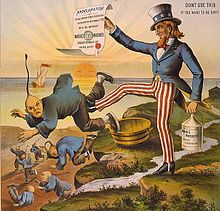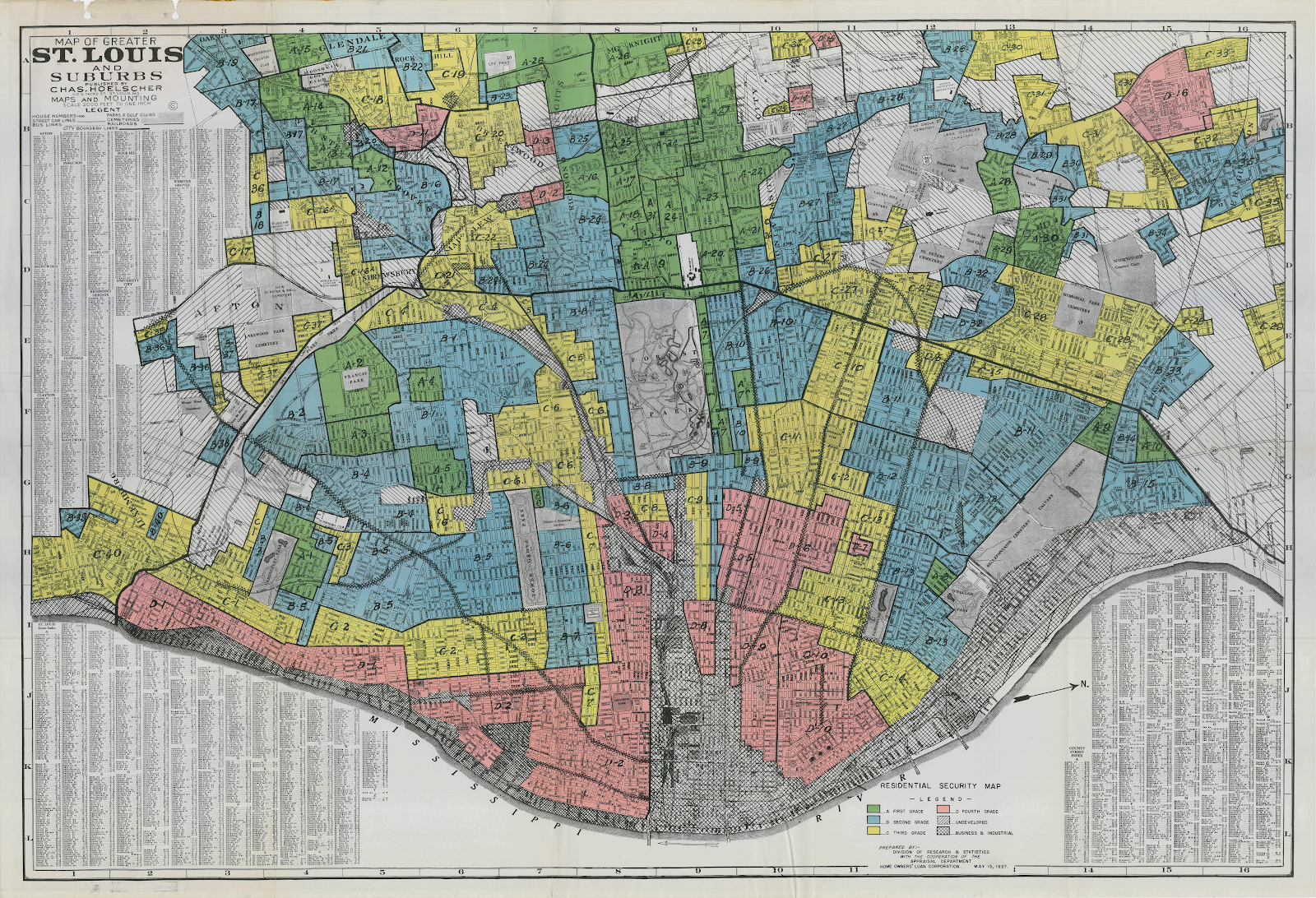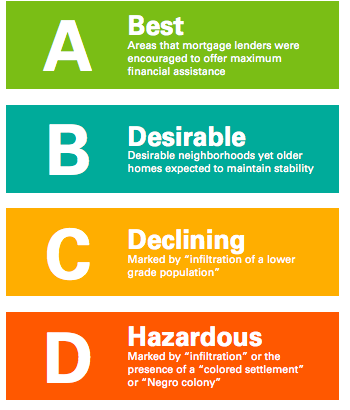2. A New Home: Experiences & Communities
After completing this or multiple sections of this lesson plan, please take 5 minutes to complete the survey at the bottom of this page. Your feedback will be extremely valuable for future curriculum updates and additions.
Part 2A:
Students will now consider a particular case study of 19th-century immigration. Ask them to look back at Fig. 1, U.S. Immigration Flows By Country, and locate the peak of Chinese immigration in the latter half of the 19th century. Ask the following:
To the teacher: Help students to consider the emphasis on a purported lack of “cleanliness”—common in negative representations of immigrants. Additionally, how might skin tone and such visible ethnic traditions as the queue—the hairstyle worn by many Chinese immigrants—have impacted their treatment by others.
Explain to students that although the term “immigration” describes all people who come into a new country, the actual experience of being an immigrant can vary from one immigrant group to another, and from one historical era to another. In this section, late 19th-century Chinese immigration will be considered in light of the Chinese Exclusion Act of 1882. Unlike European immigrants, Chinese laborers in 1882 were prevented from entering the United States. The Chinese Exclusion Act was the first time a law was implemented to prevent all members of a specific national group from coming into the country. The Chinese Exclusion Act was not the only example of racist anti-Asian immigration legislation. The Page Act (1875), The Gentlemen’s Agreement (1907), The Immigration Act (1917) and The Immigration Act of 1924 all limited or totally banned immigration from China or Japan. This shows that anti-Asian racism was not just exclusive to acts by regular individuals, but also acts by the American government. Such acts were not written into law for Germans, Italians, Irish, etc. Share with students the quotation below, drawn from the Chinese Exclusion Act, then ask the question that follows.
“Whereas, in the opinion of the Government of the United States the coming of Chinese laborers to this country endangers the good order of certain localities within the territory.”
—Chinese Exclusion Act of 1882
Questions for Students:
- Why do you think the Chinese were singled out for exclusion?
- “The coming of Chinese laborers endangers the good order of certain localities” What does this statement imply?
- How are Chinese and other Asian immigrants viewed today? What are some reasons or false stereotypes? How are other immigrant groups (Latinx, Muslims, Caribbeans, etc.) portrayed?
- Do you think competition for jobs might have created conflict between U.S. citizens and Chinese immigrants? If so, how might that lead to prejudice? Is competition for jobs an issue that people negatively attribute to immigrants in the present day?
Show students the images below, depicting Chinese laborers in the late 19th Century. The first image is of a Chinese miner during the Gold Rush of 1849-1855, the second of Chinese laborers during the construction of the transcontinental railroad in 1869. Explain that 57% of all Chinese immigrants were adult males working in the mines and doing labor on railroads and the like. Driven from their homeland by political upheaval and poverty, immigrant Chinese laborers were known to work long hours for low wages.
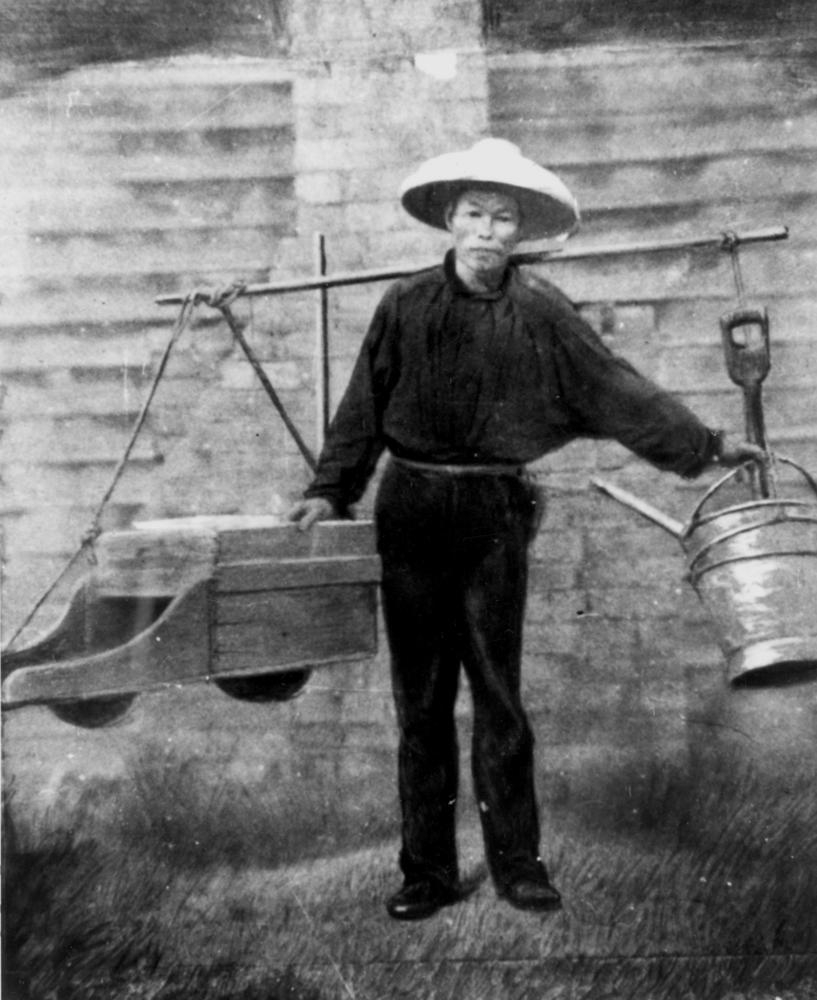
Chinese gold miner, mid-19th Century
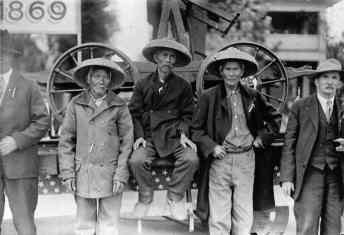
Chinese laborers constructing the Transcontinental Railroad, 1869

“Chinese Mining Boys,” circa 1865
Questions for Students:
- Why do you think the willingness of Chinese immigrants to work long hours for little pay created tension with other workers in the U.S.?
- Look at the photograph of the “Chinese Mining Boys” alongside the political cartoon (Uncle Sam kicking a Chinese immigrant out of the country). Make a connection that explains how ethnic features, skin tone, clothing, etc. can be exploited to promote prejudice. Describe how the physical features are being exaggerated and what you think that might mean.
- Compare and contrast the immigrant experience for those groups who could more easily assimilate with those who could not, based on appearance.
- How does the political cartoon below take a position against the Chinese Exclusion Act?
- How has recent immigration law been used to include or exclude groups of people? Who have these acts targeted and why?

Political cartoon depicting the Chinese Exclusion Act
Part 2B:
Explain to the students that during waves of immigration like those represented on the first chart, immigrant groups often formed communities with their fellow immigrants. Show the images below of immigrant neighborhoods and ask the class the question that follows.

Storefront in the Italian quarter of Chicago, 1920
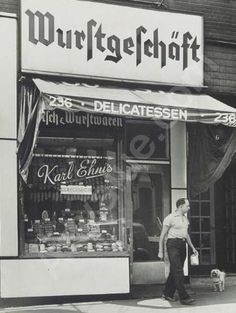
Deli in the German Yorkville neighborhood of New York City
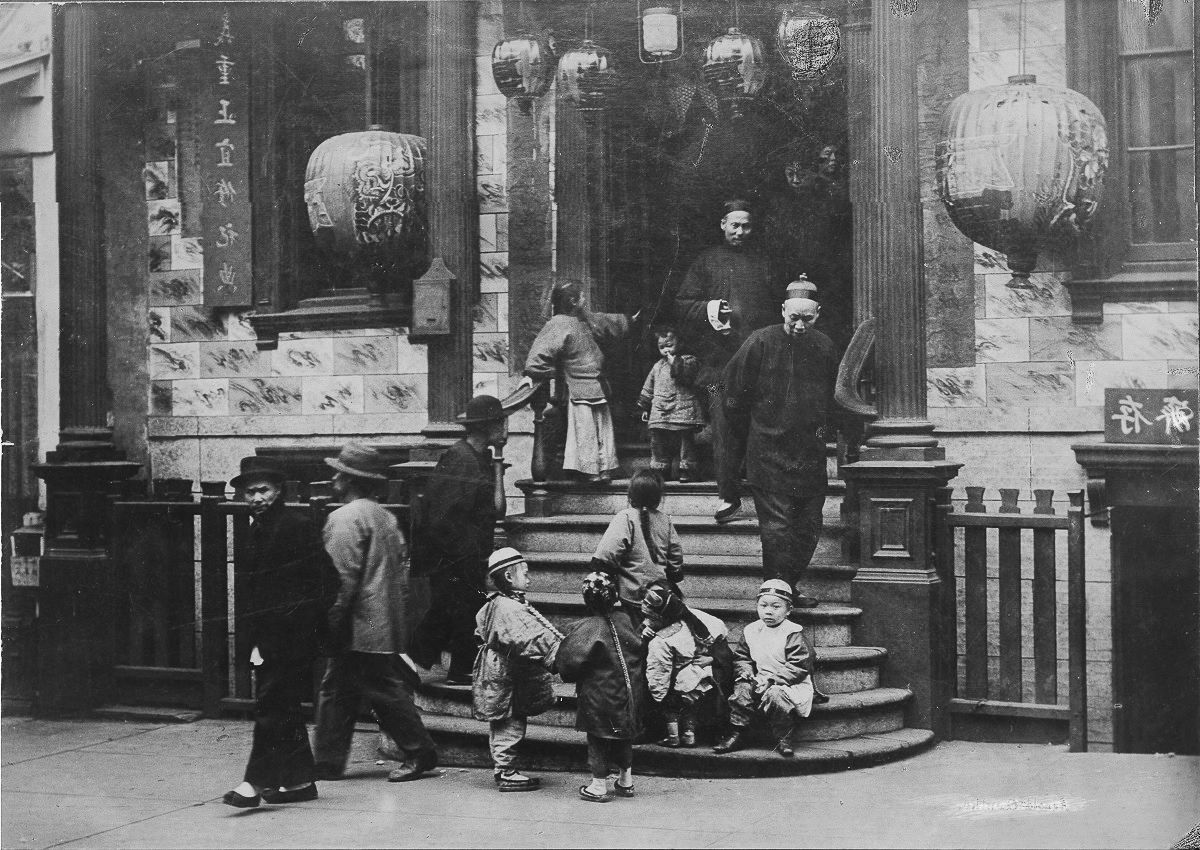
Chinatown, New York City
Question for Students:
How might the formation of such communities have helped immigrants with the challenges of living in a new, foreign culture?
To the teacher: Answers might include: immigrant communities allowed for a shared language, shared history, shared culture (religion, food, dress, etc.), extended family ties and potentially less prejudice.
Making Connections: If you were a new immigrant to the United States, why might you choose to live in a community of fellow immigrants? What would be the benefits in your daily life? Do you live in such a community or have you ever visited one? If so, what did you enjoy about it?
Part 2C:
Explain to students that, in some cases, settling in an immigrant community wasn’t a matter of choice. There may have been benefits to living together as an immigrant group, but there were also often social and legal pressures that forced such communities into being. Real estate zoning, or “redlining,” for example, strongly affected where immigrants and people of color could live. Redlined areas were the least desirable places to live. They were not safe, for example, they were near railroad tracks and garbage dumps. Redlining further oppressed communities of color by systematically denying them access to various services like . bank loans, mortgages, health care and other insurance. Show students the map of Yogi Berra’s hometown of St. Louis below, the color coding that organizes it, and the quote that follows.
“As Richard Rothstein writes in The Color of Law: A Forgotten History of How Our Government Segregated America, an appraiser in 1940 noted that a [particular St. Louis neighborhood] should be colored green, or desirable, because it had ‘not a single foreigner or negro’ whereas the middle class suburban area of Lincoln Terrace was colored red because it had ‘little or no value today…due to the colored element now controlling the district.’ However, neighborhood instability was not only defined by the presence of African Americans . . . Under the rankings, Mexican Americans, southern Italians, Russian Jews and Greeks were also among a list of least desirable ethnicities because of their alleged effect on housing values.”
Questions for Students:
- If a family moved to St. Louis in 1937 and had the financial means to live anywhere, and no restrictions due to their race or ethnic identity, how do you think they might choose a neighborhood when presented with the “Residential Security” map?
- What is the effect of redlining on children? (How they travelled to school, where they played, access to clean water, etc.)
- How do you think redlining affected Italian Americans? Do you think it made them feel they could comfortably live anywhere in the city?
- What long-term effect do you think redlining had on communities of color over time? How do communities of color still suffer from these effects?
Lesson Plan Home:
Immigration, Baseball, America: Dreams of Belonging
Section 1:
Immigration: High Hopes & Hard Realities
Section 3:
American Sport/Immigrant Players
Post-Lesson Survey
Please complete this 2-minute, post-lesson survey. Your feedback will be extremely valuable for future curriculum updates and additions.


